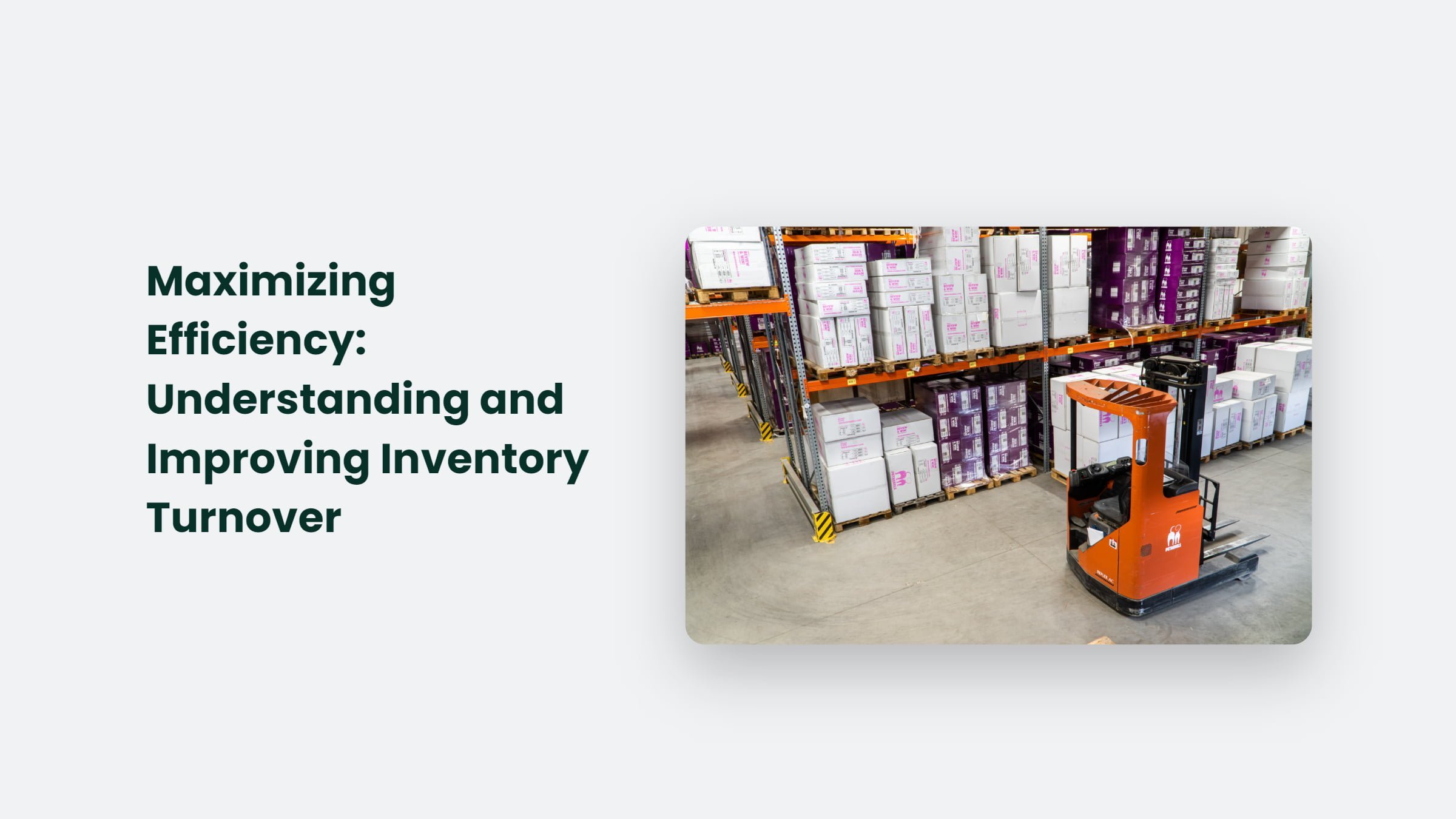

Improving Inventory Turnover in 2023

As Seen On
In today’s highly competitive business landscape, companies must focus on maximizing efficiency and profitability. This article will discuss the importance of inventory turnover, how to calculate it, and strategies for improving it.

What is Inventory Turnover?
Inventory turnover, also known as stock turnover, measures a company’s efficiency in managing its stock. It is calculated by dividing the cost of goods sold (COGS) by the average inventory during a specific period.
Significance of Inventory Turnover:
High inventory turnover indicates that a company is efficiently selling and replacing its stock, leading to improved cash flow and increased profits. Low inventory turnover can signify that a company is holding onto unsold inventory, tying up valuable cash and potentially resulting in stock spoilage or obsolescence. Additionally, inventory turnover can also impact a company’s relationship with suppliers.
Calculating Inventory Turnover:
To calculate inventory turnover, a company must divide the COGS by the average inventory during a specific period. For example, if a company has COGS of $500,000 and an average inventory of $250,000, its inventory turnover would be 2 (500,000 / 250,000 = 2).
Importance of considering other Key Performance Indicators:
It is important to note that inventory turnover should not be considered in isolation but in conjunction with other key performance indicators such as gross margin, net profit, and return on investment. By analyzing these metrics together, a company can gain a more comprehensive understanding of its overall performance.
Strategies for Improving Inventory Turnover:
- Reviewing and Adjusting Pricing Strategies: By analyzing sales and customer behaviour data, companies can adjust prices to ensure that they are competitive while maintaining profitability.
- Improving the Efficiency of Sales and Ordering Process: Companies can improve the efficiency of the sales and ordering process by streamlining procedures and utilizing technology such as inventory management software.
- Reviewing and Culling Slow-moving or unproductive stock: Regularly reviewing and culling slow-moving or unproductive stock is another strategy that can improve inventory turnover.
- Utilizing inventory management software: Implementing inventory management software can help companies to keep track of inventory levels, sales and customer behaviour, enabling them to make better decisions on inventory management.
- Implementing Just-in-time inventory systems: Implementing just-in-time inventory systems, which involve ordering products only as needed, can reduce excess inventory.
Importance of Regularly Reviewing and Analyzing Data:
Companies should regularly review and analyze their inventory turnover data to identify issues and make necessary adjustments. It can include identifying slow-moving products and taking action, such as discontinuing them, reducing the price, or increasing marketing efforts.
The Bottom Line:
In conclusion, inventory turnover is a crucial metric for companies to track and manage effectively. Companies can increase their efficiency and profitability by understanding the importance of inventory turnover, calculating it accurately, and implementing strategies to improve it. Companies need professional help if they need assistance in implementing the best strategy for improving their inventory turnover. Companies that effectively manage their inventory turnover are more likely to achieve success in today’s competitive business landscape.
Casey Jones
Up until working with Casey, we had only had poor to mediocre experiences outsourcing work to agencies. Casey & the team at CJ&CO are the exception to the rule.
Communication was beyond great, his understanding of our vision was phenomenal, and instead of needing babysitting like the other agencies we worked with, he was not only completely dependable but also gave us sound suggestions on how to get better results, at the risk of us not needing him for the initial job we requested (absolute gem).
This has truly been the first time we worked with someone outside of our business that quickly grasped our vision, and that I could completely forget about and would still deliver above expectations.
I honestly can't wait to work in many more projects together!
Disclaimer
*The information this blog provides is for general informational purposes only and is not intended as financial or professional advice. The information may not reflect current developments and may be changed or updated without notice. Any opinions expressed on this blog are the author’s own and do not necessarily reflect the views of the author’s employer or any other organization. You should not act or rely on any information contained in this blog without first seeking the advice of a professional. No representation or warranty, express or implied, is made as to the accuracy or completeness of the information contained in this blog. The author and affiliated parties assume no liability for any errors or omissions.

